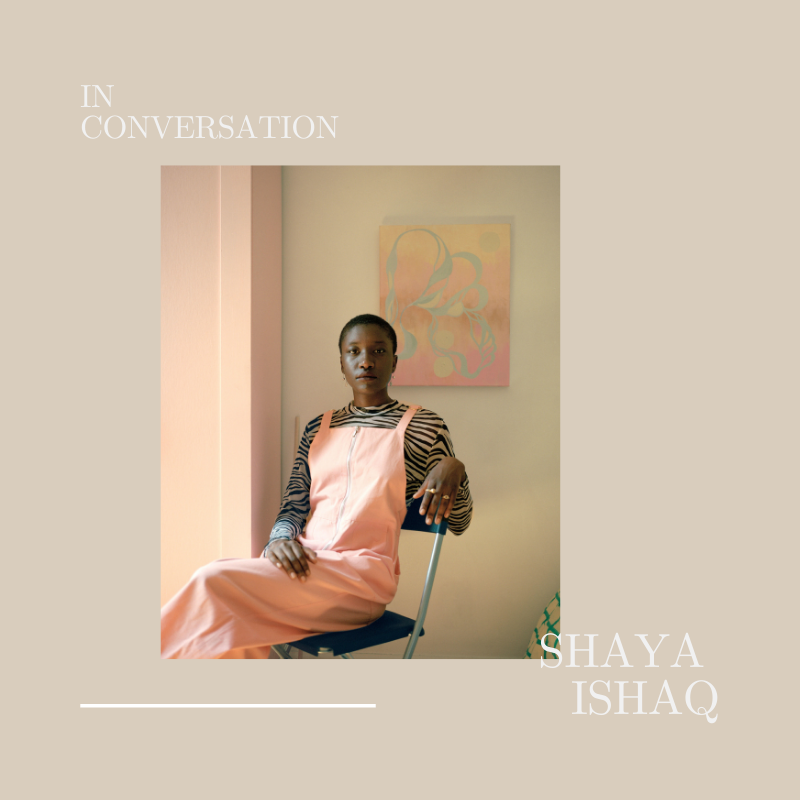Tell us about yourself, your work and how you got started.
I am an interdisciplinary artist and designer who works with textiles and ceramics to create objects, spaces, and installations. I love collaboration because of how generative and unpredictable it can be.
As a kid I was interested in art and fashion design and I was lucky to attend a high school that fostered my creativity. I started playing with clay when I was taking a break between university. It wasn't until I went to art school that I was deliberately trying to make connections between textiles and ceramics as I was finding my creative voice.
How would you describe your creative process?
I would describe my creative process as fluid, intuitive, and oftentimes driven by materials and research. As a fiber and ceramic artist led by process, I am always asking myself what are the materials saying? They can also be really helpful questions especially when I am working from the lens of a designer thinking of form, function, and material properties.

Image by: Brandon Brookbank.
So, this interview is about exploring the notion of objects as living things with experiences. This idea forces us to think beyond the life of a product, i.e. production, and forces us to reflect about behaviors, norms that these products or items create or take part in. Does this notion manifest in your work? If yes, how?
The notion of objects as living things is something I believe in on a spiritual level. Objects can be imbued with memory and hold traces of where we or they have been.
I think the life of an object begins with the materials that composes it. As someone who works on a small scale making one of a kind or limited edition collections, there are different elements that contribute to its life: my hands that manipulate materials and transmit energy and the materials themselves.
With my ceramic necklaces, past clients have told me that they feel the energy of the piece and it can make them feel powerful which is so amazing and affirming to hear. This is where the idea of adornment really comes out. I think I attract people who are seeking work that has a spirited life, energy, essence that can accompany them in their own lives.

Image by: Brandon Brookbank
How do you think this notion can influence conversations on sustainability moving forward?
I think my perspective on this notion can influence conversations on sustainability by encouraging people to make intentional choices when it comes to the materials used to create products. If something is made using upcycled materials, you are intersecting with a past life. How do you honor that? The work of designers Noel Puello and Yinka Ilore come to mind because of their approach to this question. When we remember that object making can be informed by our heritage, there is a whole life and lineage being imbued in the work which makes me think of the ceramic work of Dina Sur. Her design practice centers storytelling and cultural sustainability.
What would be your advice to designers out there focused on ethical and sustainable production?
Hmm, I don't know if i have any advice. More so questions. As a designer are you being intentional and really taking into account the meaning of sustainability or simply jumping along a bandwagon? I do think it’s the most crucial thing to be thinking about as designers in this day and age however, it is not something to just slap onto your marketing plan to attract customers or to explore in a superficial way. There are so many layers to the conversation of sustainable production. I truly believe it is material, ecological, and cultural and if you decide to hone in on any of them, be intentional with your efforts if you're anchoring your work in this direction. I think that as we move toward sustainable production, it’s crucial to think about accessibility. I don't mean lowering the value of your work but integrating payment instalment plans.
And flipping that question, what would be your advice to consumers on buying sustainably?
Don't take things at face value even when it is marketed to you with all the right buzzwords. Do research, ask questions.
In the current context, what are some of the challenges that have been present in your work with various communities? In your case, you can reflect on your general production practices and how COVID may or may not have affected it. How did you navigate these challenges?
Before the pandemic, I had plans on embarking on my first international artist residency in a ceramic focused program that would have allowed me to develop a new body of wearable work. Since it has been postponed, like many other people, a lot of shifts had to happen in my personal life which affected the trajectory I had envisioned for myself this year. The pause made me reassess my goals as an artist and as a designer respectively and made me realize that when I am not outsourcing my production or using external studio space on a short term basis, it's very important for me to have my own independent studio base. This is what I have been most focused on in the later half of 2020 - investing in my studio that will allow me to get started on my general production for my upcoming brand project, Mild Eyes. The biggest challenge has been being patient with the time it takes to really develop my personal studio and having faith in the bigger picture.

